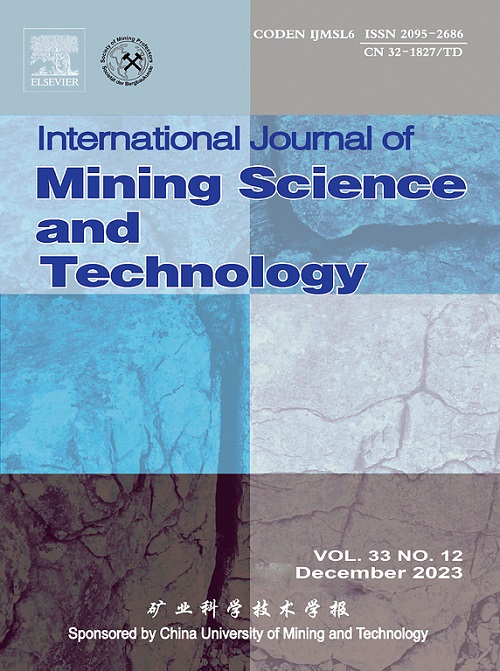Multi-frequency formation mechanism and modulation strategy of self-priming enhanced submerged pulsed waterjet
IF 11.7
1区 工程技术
Q1 MINING & MINERAL PROCESSING
International Journal of Mining Science and Technology
Pub Date : 2025-02-01
DOI:10.1016/j.ijmst.2025.01.002
引用次数: 0
Abstract
Under submerged conditions, compared with traditional self-excited oscillating pulsed waterjets (SOPWs), annular fluid-enhanced self-excited oscillating pulsed waterjets (AFESOPWs) exhibit a higher surge pressure through self-priming. However, their pressure frequency and cavitation characteristics remain unclear, resulting in an inability to fully utilize resonance and cavitation erosion to break coal and rock. In this study, high-frequency pressure testing, high-speed photography, and large eddy simulation (LES) are used to investigate the distribution of the pressure frequency band, evolution law of the cavitation cloud, and its regulation mechanism of a continuous waterjet, SOPW, and AFESOPW. The results indicated that the excitation of the plunger pump, shearing layer vortex, and bubble collapse corresponded to the three high-amplitude frequency bands of the waterjet pressure. AFESOPWs have an additional self-priming frequency that can produce a larger amplitude under a synergistic effect with the second high-amplitude frequency band. A better cavitation effect was produced after self-priming the annulus fluid, and the shedding frequency of the cavitation clouds of the three types of waterjets was linearly related to the cavitation number. The peak pressure of the waterjet and cavitation erosion effect can be improved by modulating the waterjet pressure oscillation frequency and cavitation shedding frequency.
求助全文
约1分钟内获得全文
求助全文
来源期刊

International Journal of Mining Science and Technology
Earth and Planetary Sciences-Geotechnical Engineering and Engineering Geology
CiteScore
19.10
自引率
11.90%
发文量
2541
审稿时长
44 days
期刊介绍:
The International Journal of Mining Science and Technology, founded in 1990 as the Journal of China University of Mining and Technology, is a monthly English-language journal. It publishes original research papers and high-quality reviews that explore the latest advancements in theories, methodologies, and applications within the realm of mining sciences and technologies. The journal serves as an international exchange forum for readers and authors worldwide involved in mining sciences and technologies. All papers undergo a peer-review process and meticulous editing by specialists and authorities, with the entire submission-to-publication process conducted electronically.
 求助内容:
求助内容: 应助结果提醒方式:
应助结果提醒方式:


